Saturday, April 27th - Friday, May 3rd
Saturday we took the train 2 hours and 45 minutes to Brussels, Belgium for the second week of our trip.
We had a very memorable meal here our first day in Brussels. We were enticed in by a very friendly young man outside and the pictures and prices on their board outside. The very friendly wait staff made recommendations and brought us a small free drink to try, so we went with their suggestions and ordered a carafe of the drinks and a beer for John.
Plateau de Fruits de Mer ((plates of fruit of sea). We ordered two platters of seafood to share. It was all very yummy and we enjoyed it very much. However, we were surprised to find out the bill was a lot higher than we had anticipated. When I was reading in our guide book later, there was a warning about restaurant hustlers in the neighborhood that would entice you in and charge exorbitant prices compared to their signs outside and other nearby restaurants. Oh well, live and learn. I have to say it was very good and we really did enjoy the experience even if we could have eaten for a lot less somewhere else. The adventures of travel.
This is a bread slicing machine in a little neighborhood grocery store where we went to stock up our new apartment in Brussels for the week. They had wonderful fresh breads and you sliced it yourself, if you wanted it sliced.
Looked like a place John would enjoy, but we didn't stop.
This place also caught our eye, but we didn't stop here either.
Every window you pass seems to have yummy Belgium chocolates. Totally worth a stop!
Our first evening we walked a couple blocks from our apartment to the Grote Markt (Grand Place), the original main square of the city with the Town Hall, shopping, restaurants, etc.
It was incredibly beautiful at night.
And humming with tourists and shoppers.
On the narrow side street, as we walked over here, there was an old lady playing an accordion on the corner with a huge St. Bernard dog sitting next to her. There is such an eclectic variety of musicians busking on the street corners and elsewhere, trying to make a living.
The old Royal Palace and Gardens. We went to the BELvue Museum next door, covering Brussel's history from their independence in 1830, a lot about their welfare system, national health care and worker's rights. In 1846 the Belgium economy was 55% agriculture, 32% industry and 13% services. In 2014 they had 1% agriculture, 21% industry and 78% services.
Massive park across the street below was the original palace gardens.
You can rent these electric scooters at the train station and leave them wherever you wish, so you see them parked most anywhere.
Cathedral of St. Michel and St. Gudula.
There was a chapel built here as early as the 9th century. It was replaced in the 11th century by a Romanesque style church. The present Gothic style church was started at the beginning of the 13th century and took 300 years to complete. A restoration from 1983 to 1999 uncovered remnants of the 11th century church.
This is where we had a late lunch after the museum and sightseeing. Pizza, fish and chips, and cordon blue. All very good.
Stock Exchange Building (1873) just off the alley from the Grand Place.
Manneken-Pis or Pisguy is a famous fountain. The little guy is only about 2 feet tall and it has become a tradition when heads of state or other dignitaries come to visit, that they bring a gift of a new outfit for him. So you never know what he may be wearing.
It has become some sort of crazy tradition for tourists to visit the little guy and take pictures, as you can see by the mob of people gathered around him on this tiny back street.
John and Dawn walking through Grand Place on Monday morning.
There was a group of people in costume getting ready to do some sort of traditional performance, but we didn't stay to watch.
We were in a hurry to catch the 8:00 AM train for a day trip to the city of Bruges. This is the ceiling of the walkway outside the Brussels train station. I never knew the Smurfs originated in Belgium. La Schtroumpf Experience Het Smurfen Aventuur.
Walking along the scenic streets in Bruges.
It's a lovely little town to walk around, but get there early to enjoy it before the tour buses arrive, as it gets very crowded later in the afternoon.
You can take a canal cruise around town if you wish, but we walked.
Everything in this picture is made out of chocolate.
We headed directly to the Belfort (Bell Tower) to get in line to climb the 366 steps. Only 50 people are allowed up at a time, so you just wait until someone else comes down before the next person can go up.
This is the back side and courtyard where you go to line up and get tickets. The 83-meter-high belfry is made up of three building layers. The bottom is 2-inch brick built in the 13th century. The top octagonal lantern tower is Brabant limestone built from 1482 to 1486. Until 1741 the tower had a 19 meter wooden spire. The bell is 2.13 meters tall, 2 meters in diameter and weighs 6 tons.
Waiting our turn.
The city charter was stored in this vaulted room, called the Treasury, from the 13th century onward. Belfries symbolized the power of the cities. This room was built after 1280 when there was a fire in the tower that destroyed the city's oldest documents, which are stored in padlocked chests behind two heavy wrought iron doors. There were ten locks on the doors, eight keys were in the hands of the deacons of guilds and trades, one was kept by the head of the district in the city and one by the mayor. None could consult or replace any documents without the other nine. The balcony of the bell tower was the preferred location for public proclamations.
Views of the city from the top. The Belfort has stood over Market Square since 1300.
As you can see, it is not the only tower in town, just the tallest.
Market Square is ringed by the frilly-spired post office, lots of restaurant terraces and great old gabled buildings. The typical old buildings here were rebuilt in the 1800s. The pre-Martin Luther Gothic style was a political statement for this very Catholic town. In the 1300s a canal came straight up to this square. Cranes (powered by humans in hamster-type wheels) loaded and unloaded the boats. There was a covered warehouse where businessmen from all nations stored and traded goods. In former times farmers shipped cotton, wool, flax and hemp to the port and locals would spin, weave and dye it into finished products and ship it throughout the known world. By 1400, they were trading more refined goods, such as trendy clothes, tapestry, chairs, jewelry, and paper (a new invention replacing parchment) made in Flanders with cotton that was shredded, soaked and pressed. The statue (below) depicts two friends clutching sword and shield and looking toward France as they lead a popular uprising against the French king in 1302. They won Flanders its freedom. Cleverly using hooks to pull knights from their horses, they scored the medieval world's first victory of foot soldiers over cavalry, and of common people over nobility. It was called the Battle of the Golden Spurs after they scavenged all the golden spurs from the fallen soldiers.
Belgium is famous for its lace making.
Decisions, Decisions! Beer or Gelato?
We decided to have lunch instead at Ribs 'n More. I had a salmon and cheese croquette, scampi salad and caramel flan for desert. Mmm, Mmm!
After lunch we continued meandering around town.
I popped into an art exhibition by David De Graef along the way. Very strange images. I guess art truly is in the eye of the beholder.
Sint Salvatorskathedral (Saint Saviour's Cathedral) in background.
Crowne Plaza.
More street buskers.
Tuesday, April 30th, we rented a car at Midi-Zuid (south) Train Station and drove to Flanders. This is the Cloth Hall and Belfry with 231 steps in the little town of Ypres that was completely destroyed by the Nazis in WWII. It now houses the In Flanders Fields Museum, named after the famous poem written by John McCrae, a Canadian doctor, while in the embankment of a canal following the death of his friend. On August 4, 1914, Germany sent some 800,000 troops across the border into neutral Belgium en route to France. By August 20, they had already taken Brussels, and four days later they were in Western Flanders. The low-lying ridges around the town of Ypres came to be known as Ypres Salient ( French term for bulge) and saw some of the fiercest fighting in WWI throughout the whole war. By November 1917 the town and countryside were completely destroyed with hardly a tree or building left standing. Then the U.S. finally entered the war. By late April the German advance had stalled and the American troops had come to the rescue. By the fall of 1918 the Allied forces made huge gains. Armistice Day on Nov. 11th finally brought an end to the war. The area was so devastated that Winston Churchill wanted to keep it in ruins as a monument to the travesty of warfare. Some advocated building a new modern town. But the locals decided to rebuild the whole town exactly as it was.
This is the cathedral directly behind Cloth Hall, which was a store house and market for wool and cloth, reflecting the importance of Ypres and the cloth industry in the Middle Ages. Both buildings were nearly completely destroyed. Cloth Hall was originally built from 1250 to 1304. Its reconstruction was faithfully carried out in its pre-war state and only finished in 1967. Every building in town has been rebuilt to its original state since 1918. People from 50 different countries or cultures fought here in West Flanders. WWI claimed the lives of an estimated 9 million people. About one million were reported killed, wounded or missing in this area.
One of the rebuilt streets in town.
Typical delivery bike.
Menin Gate is built into the old town wall of Ypres and it's etched with the names of British Commonwealth victims who fought here.The gate is formally a mausoleum for "the Missing" 54,896 troops whose remains were never found.. Every night since 1928 under the arch at 8 PM, a Belgium bugle corps plays the "Last Post" to honor the dead.
Hundreds of thousands of men passed through here from many countries. The gate is one of seven memorials to the missing in Belgium.
This is a portion of the old city wall that the memorial is connected to.
There are stairs like these on both sides leading up to the city wall on each side.
When we left Ypres we drove to this remote location in the middle of a field near the town of Wormhout and two neighboring villages that were strategic points for a possible advance on Dunkirk..
This memorial site recalls the massacre of 80 British soldiers and one French soldier during Operation Dynamo at Dunkirk when large Allied units were to gather at Bray-Dunes before being shipped back to Great Britain during WWII. On May 2, 1940 German troops blocked access to the three villages and took about 100 soldiers prisoner and held them in a cowshed in the middle of a pasture on this spot, known as la' Plaine au Bois. Twelve S.S. troops began their dreadful task by throwing five hand grenades into the barn and then shooting down most of those who tried to escape. In 1972 British veterans who had fought in neighboring villages returned and laid crosses here. The barn was rebuilt and opened in 2001 in the presence of two survivors. Before being captured these martyrs fought bravely against superior Nazi forces, helping the evacuation of the Allied troops in Dunkirk. They had been ordered to hold the village at all costs to buy time for the evacuation.
Overview of our next stop, Dunkirk, France at Bray Dunes.
The fort is a part of a nature preserve of 230 hectares, the Flemish Coastal Plane Dunes.
Throughout history Dunkirk's strategic position as guardian of the North Sea and defender of Southern Flanders has made it a city coveted by all the great powers.

In the Middle Ages authorities surrounded the town with fortifications that have been endlessly remodeled, strengthened or rebuilt after enemy sieges.
Operation Dynamo, the largest seaborne evacuation of all time, brought back to England 338,000 soldiers between May 26th and June 4th.
Wednesday, May 1st, we took the train to Braine-l'Alleud about ten miles south of Brussels and walked about a half hour to Butte du Lion (Lion's Mound) and the Memorial 1815 Museum, aka the sight of the Battle of Waterloo. John and Dawn above approaching museum and mound.
It's an excellent museum with a great 3-D movie plus special effects of ground trembling during cavalry charge and smoke from burning farmhouse. It covers the French Revolution and Napoleon's rise to power with lots of military equipment and uniforms. There is also a 360 degree panoramic painting of the battle that is 120 meters long and 12 meters high. It was done be a team of French military painters, a common practice at the time.
Climbing the 226 steps gives you a great panoramic view of the battlefield. The Crown Prince William of Orange fought bravely and was wounded here that day. His father King William I decided in 1815 to build a memorial here. Work began in 1824 and was completed in 1827. A total of 10,594,400 cubic feet of earth was moved to create the mound. The diameter at the base is 554 feet and it is 134 feet tall.
View of the museum and the town of Waterloo in the distance.
View of Hougoumont Farm in the distance where much of the battle took place.
The guillotine was used for the first time in 1792. Due to its speed, it was originally designed to make the death penalty a less painful procedure.
You can walk out to the farm or catch this trolley. Dawn and I walked. It was about a 20 minute walk and well worth it.
They had a very cool visual presentation in this barn that explains why the farm was key to Wellington's victory. More than 6,000 soldiers perished at the farm. Hougoumont became a battle within a battle for over nine hours. The chateau was shelled by Howitzers, caught fire and burned completely through to the chapel where it died out at the feet of Christ on a life size wooden crucifix, saving both the crucifix and the chapel. The crucifix was carved about 1600 and still hangs over the chapel door. It was still a working farm until 2003 when the last tenant died.
By 1815, the Grand Alliance (England, Prussia, Austria and Russia) had defeated Napoleon, sending him into exile in Elba and putting Louis XVI's brother on the French throne. But on March 1 Napoleon escaped and returned to France, driving out the king and restoring his army to its former glory. Each member of the alliance pledged 150,000 troops to rout him. On the day of the battle, 72,000 French faced off against 68,000 British and Dutch troops under the Duke of Wellington with 45,000 Prussians within marching distance. By nightfall, Napoleon was defeated and the Prussians even captured his abandoned carriage which was chock full of diamonds that later became part of the Prussian crown jewels.
Napoleon's reign of glory was over and Waterloo became a metaphor for a crushing defeat. Almost 200,000 men faced each other in battle for over 10 hours with 35,000 horses and under fire from 500 cannons. 40,000 men were killed or wounded and Britain became the superpower of the 19th century. In 1899 the last survivor of the battle died at the age of 110.
These guys were getting ready to do some kind of re-enactment, but we didn't stay to watch. It was time to start back to catch a late lunch and our train back to Brussels.
Back in Brussels, we checked out the many stroopwaffel (syrup waffle) stands and shops.
"Must you take a picture of me eating, Mom?" Just one last treat in Belgium, before she heads back to Amsterdam tomorrow to catch her plane back to the U.S.A.
Goodbye Dawn, Thursday, May 2nd.
We headed out to the 1958 World's Fair site to see Mini-Europe and the Automium, a giant, silvery iron molecule, with escalators and stairs connecting the various atoms, Brussels answer to the Eiffel Tower, Space Needle and St. Louis' Gateway Arch. Picture above is a model of Castle of Olavinlinnia in Finland built in 1475.
Mini-Europe has scale models of just about any place in Europe you ever heard of and more, including little villages, people, boats, buses, etc. Tallinn "City of the Danes" since 1219. This large seaport was rebuilt in 1529 part of a well-preserved section of an ancient medieval enclosing wall.
Kind of kitschy, but kind of fun. Hoensbroek Castle in Holland built mid-1600s.
A great place to bring kids and there were many groups here on field trips. 13th century Collegiate Church of Our Lady in Dinant, Belgium.
The Grand Place in Brussels.
Ring of Canals in Amsterdam built over a 50 year period in the 1600s. Amsterdam has more than 1,000 bridges. Venice has only 700.
Britain's Parliament and Big Ben with Eiffel Tower in background.
Arc de Triomphe in Paris. John is peaking through under the arch.
Sacre' Coeur (Sacred Heart) in Paris.
Escorial Royal Monastery built by King Phillip II in the mountains 30 miles from Madrid. It has 26 tombs of kings and queens, 7,500 relics and 35,000 books. It has 2,600 windows, 1,200 doors and 86 staircases.
Plaza de Toros (bulls) in Seville, Spain built 1760.
Cathedral of Santiago de Compostela in Galecia, Spain. It took 24,000 man hours to build this model.
Leaning Tower of Pisa, Cathedral Piazza del Duomo in Pisa, Italy.
The Szechenyi Baths in Budapest built from 1913 to 1927. Over 70% o Hungarian soil contains thermal waters.
Magnificent 18th century Melk Benedictine Abbey overlooking the Danube River in the city of Melk, the first capitol of Austria.
Same abbey, different angle.
The Automium, built for the 1958 World's Fair, is 102 meters high with 9 spheres, one at each of 8 points and one in the middle connected by 20 tubes. It rests on three pillars and represents an iron crystal magnified 165 billion times. It weighs 2,400 tons. The building heralded a new era, the atomic age, and was inspired by the "Atoms for Peace" program that was launched by President Eisenhower. Atomic power was to no longer be seen as a potential weapon of war, but as a new source for peaceful energy. It was the showpiece of the Belgian iron and steel industry.
The three pillars are 35 meters tall. The diameter of the tubes is 3.3 meters and the diameter of the spheres is 18 meters.
Looking back down at Mini Europe from inside.
Psychodelic disco-style lighting in the very long escalators.
There are three escalators and 80 steps to go up.
And 167 steps and one escalator to get back down.
One floor had this room full of pods with mattresses in them where kids could come on field trips and spend the night.
Next we went to the A'dam Brussels Design Museum.
I found the furniture most fascinating. This chair and love seat are shaped like human teeth.
This catcher's mitt might be comfy.
To end our day we took a short walk around St. Catherine's Place and neighborhood.
We stopped to eat at the Hotel Orts. I had Flemish beef stew and frites (fries) and Moulleux de Chocolat (chocolate lava cake with ice cream and fruit sauce). John had stompf (mashed potatoes) with ham and sausage and two biers. Then we just rode around town on the bus, as we had a day pass for the bus and figured, why not?
Place du Beguinage (Beginhof), another church among hundreds.
They have recycling bins for about everything you can think of.
Friday, May 3rd, we took the Metro to see the European Parliament.
In the entry way these girls were balancing on some sort of flexible poles and swaying about gracefully with their flowing ribbons.
Interesting painting inside that caught my eye. The Parade by Yannis Gaitis 1983. I'm quite sure I have seen this somewhere before.
It's a massive complex of modern buildings.
Directly behind is the 1880 Leopold Park that was once a zoological garden. Behind the park is the House of European History, a very cool museum, where we spent the rest of the day.
We took the Metro and walked around a couple more neighborhoods. This is the Palace of Justice with a WWI and WWII memorial in front. From here we enjoyed the observation point on the hill overlooking the city and wandered back downhill toward Grand Place and our apartment. We stopped to eat at Le Lotus Bleu, a little Vietnamese place. It might have been our best meal of the trip and also one of the cheapest. Then we went home, did laundry and packed for our next destination, Delft. More about that in the next blog.
Tarra































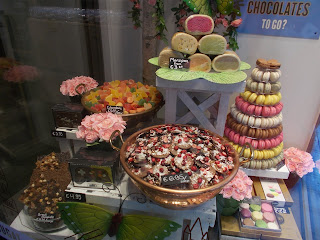


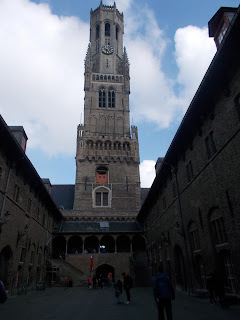

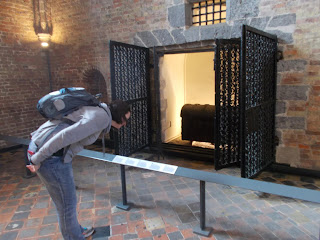































































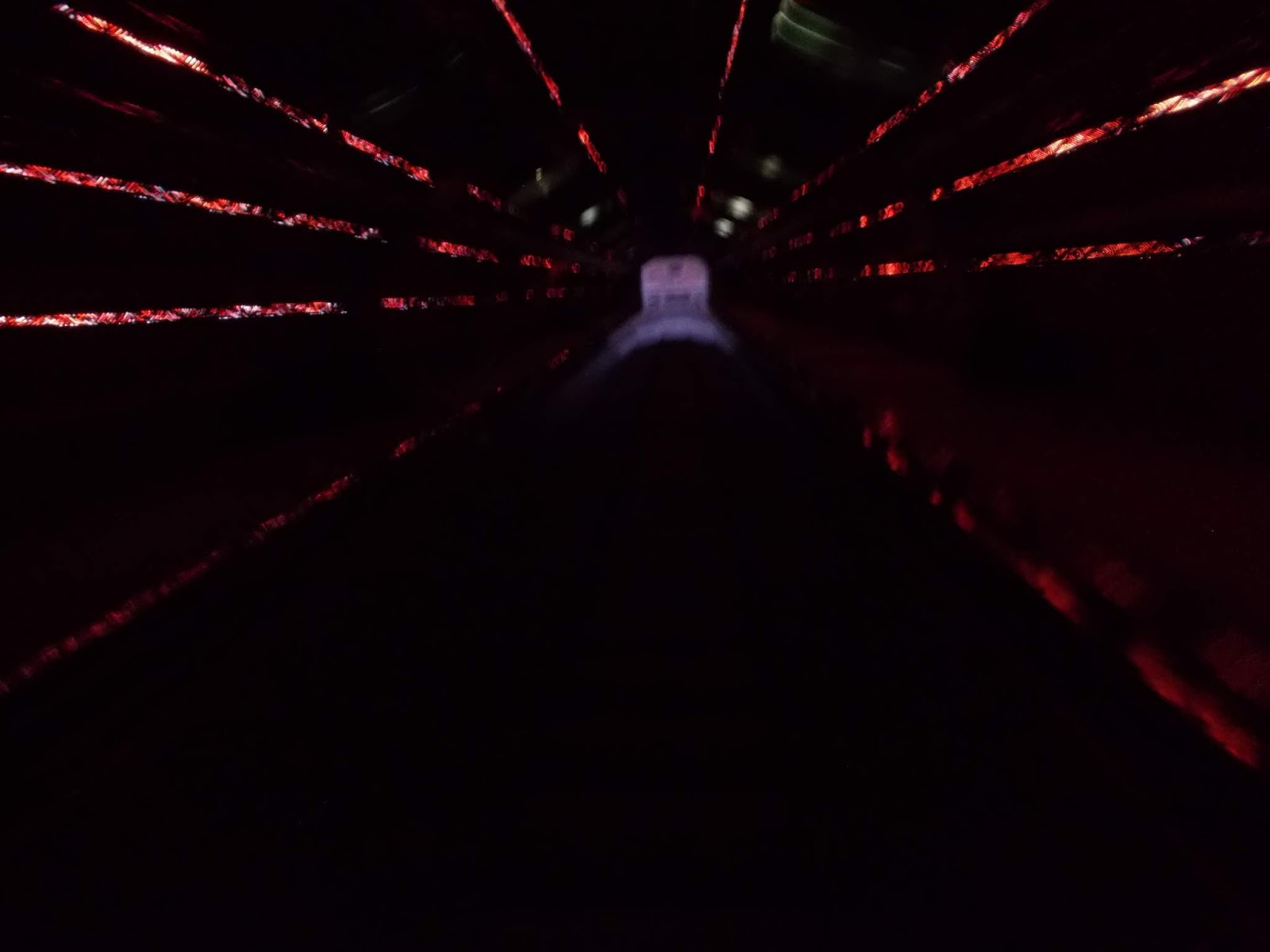



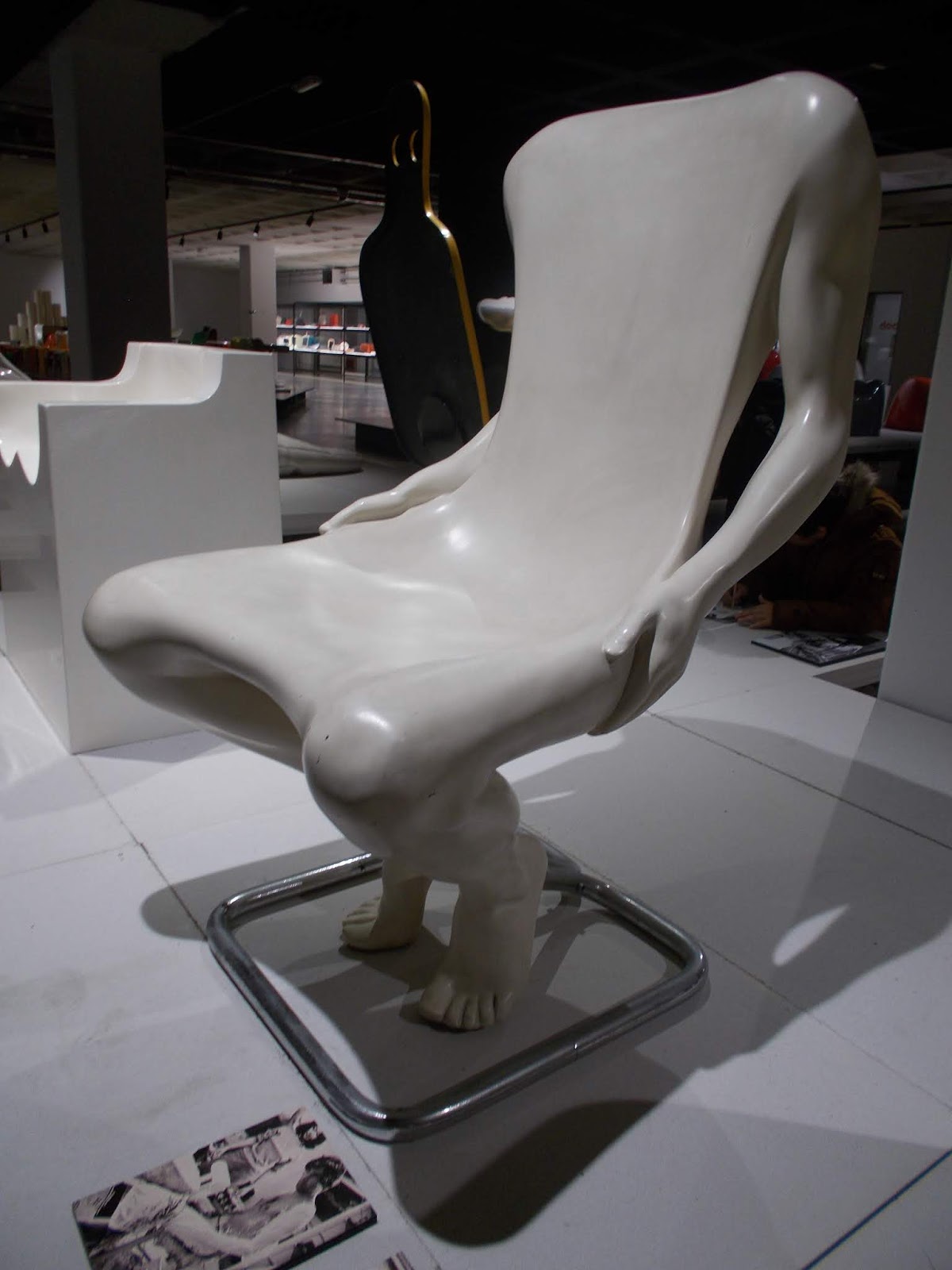
















No comments:
Post a Comment